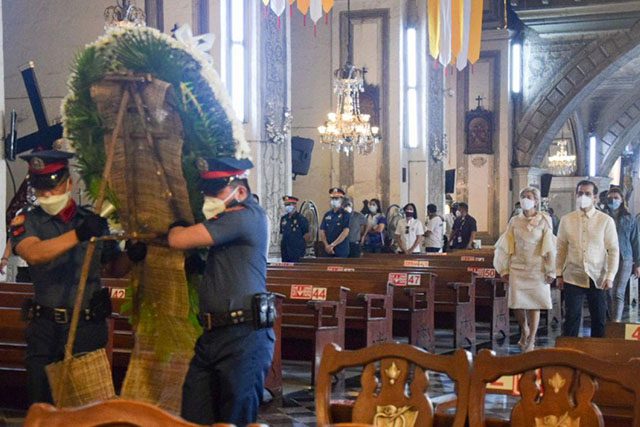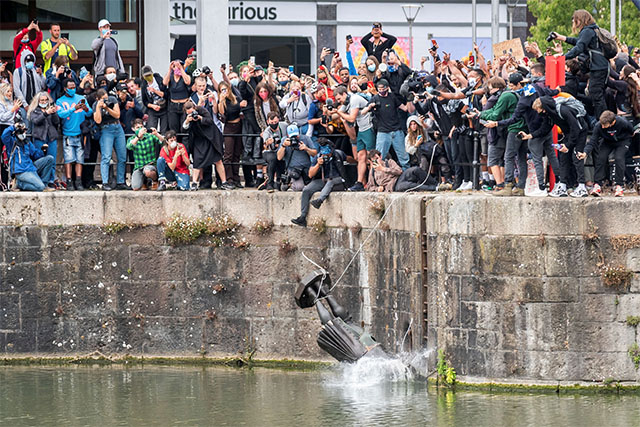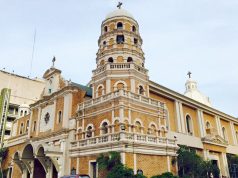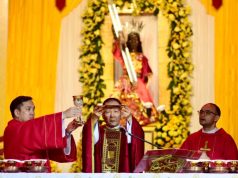
While people on the other side of the globe are tearing down statues of oppressors and colonizers, Manila Mayor Isko Moreno Domagoso honored Spanish conquistador Miguel Lopez de Legazpi during the founding day of the nation’s capital.
The City of Manila marked its 449th founding anniversary on Wednesday and Moreno, the city chief, commemorated the day by attending two wreath-laying events, a groundbreaking, a meeting and a mass.
This is the first commemoration of “Araw ng Maynila” under the leadership of Moreno who was elected during the midterm elections last year.
One of the wreath-laying activities took place at the Rajah Sulayman Park in Malate, Manila to honor the ruler of Manila when the Spanish invasion occurred in the 16th century.
The other took place inside the UNESCO World Heritage Site, San Agustin Church in Intramuros, where the remains of Legazpi was interred.
Moreno paid tribute to the conquistador by offering a wreath on his tomb, as well as touching it reverently for seconds.
PANOORIN: Nagtungo rin si Manila Mayor Isko Moreno sa San Agustin Church para sa pag-aalay ng bulaklak sa libingan ni Miguel Lopez de Legazpi, ang nagtatag ng lungsod ng Maynila. @dzbb pic.twitter.com/PpD5M1Lzv4
— Isa Avendaño-Umali (@Isa_Umali) June 24, 2020
Is veneration necessary?
Moreno’s gesture to honor Legazpi, however, was not welcomed by some Filipinos who pointed out that the mayor has venerated one of the figures who led the beginning of Filipino oppression under the centuries-long Spanish rule.
“I love you Mayor @IskoMoreno pero sa panahon na may mga protesta about racism and colonialism, tinatapon pa nga sa ilog ang mga ganitong estatwa ng mga mananakop, parang hindi tama ang pagbibigay-pugay kay de Legazpi,” Keb Cuevas, CEO of digital agriculture platform Tagani, tweeted.
Lawyer Emil Marañon III, who saw the video clip of Moreno, couldn’t help but comment: “We are a sick nation.”
“While other countries are toppling and destroying monuments of colonists and war criminals, here is Manila Mayor @IskoMoreno honouring Miguel López de Legazpi who led the 1571 invasion of Manila which led to the 333-year colonisation of the Philippines,” he added.
Anti-racism protesters in the United Kingdom recently threw a statue of a slave trader, as well as defaced the statues of some historical figures who were racist or oppressive to Africans.

These happened in light of the “Black Lives Matter” movement which calls for a stop to racism against people with African heritage that were renewed following the death of George Floyd in the United States.
Meanwhile, sociology instructor Athena Presto pointed out that Filipinos do not “owe” any city to their colonizers since the country had “organized settlements” before the arrival of the Spaniards.
“How about the fact that the existence of pre-colonial tribes and governance systems made colonization possible—not the other way around? We owe no city to our colonizers. We already had organized settlements before. Ever heard of Raja Sulayman who ruled Manila in the 1500s?” she tweeted.
Historian-blogger Kristoffer Pasion was likewise not amused with the tribute to Legazpi.
“I’m sorry Mayor Isko. Maling mali ka dito. This is overdoing it. Keep in mind that while colonization shaped our nation-state, its primary objective was exploitation. Just knowing this simple truth would have stopped you from putting a wreath on Legazpi, or venerating his grave,” he wrote in response to the video.
Pasion added in the thread that he has “no qualms” with the mayor visiting the conquistador’s tomb “as acknowledgement to Legazpi’s consequential actions that shaped our history.”
“But putting up a wreath, and touching the stone vault? He overdid it,” he continued.
Legazpi and Manila
Legazpi, who was assigned to colonize the Philippines for the Spanish crown, headed the Spanish invasion in the already-flourishing Manila ruled by Rajah Sulayman and formally took possession of the then-Moslem kingdom on June 24, 1571.
The date became known as the founding date of Manila as a city under the rule of Spain.
Before Legazpi’s arrival, Manila in Sulayman’s reign was already actively trading with foreign merchants. In fact, the territory “was considered to be one of the most important international trade port during that time,” according to the Presidential Museum and Library.
Goods that were traded included silk, cotton robes, earthenware jars, gold thread, cinnamon, wax and brass, among others.
“The inhabitants (of Manila) were well-attired and that the chiefs wore more elegant clothing and wore anklets of gold around their arms,” the website noted.
The wealthiest among Filipinos “wore colorful head dresses with golden trinkets and other body ornaments.”
While Legazpi treated the rajahs and their relatives with “deference and promised them privileges such as exemption to the tribute” following the invasion, Spain as a colonizer continued to be known for its “excessive abuse of power and unfair treatment of Filipinos.”









